Who are you calling a troglodyte?
The caves and overhangs of Setenil de Las Bodegas have been home to residents here since before the Roman conquest.
Okay, we are back in southern Spain, so to speak, where it is all blue skies and sunshine. Unfortunately, in real time, that was a month ago. For the past few weeks, I have been in Luxembourg, Belgium and Normandie, where rain has followed me like the Rob McKenna character in The Hitchhiker’s Guide to the Galaxy. (He’s a truck driver who is followed by rain clouds everywhere he drives.)
I am slowly tackling the backlog of my unchronicled adventures, however, so let us all return today to sunny Spain, where we have just left the Atlantic port of Cádiz and headed east across Andalusia to the Mediterranean. On the way, we will visit one of the country’s fabled pueblos blancos in the Sierra de Grazalema region and then head to the Mediterranean port city of Málaga.
We will also circle the city of Ronda in a fruitless search for parking, but I will mercifully skip that part altogether in the blog, much as I skipped my planned visit to Ronda for the same reason, even though it’s the best known of all the white villages.
There are 30 or more pueblos blancos in northern Càdiz and Màlaga provinces, many with unique characteristics, but I only had time for two if I was to make Màlaga by nightfall. Based on the recommendation of a fellow guest at my Sevilla hostel, who was travelling a few days ahead of me on roughly the same circuit, I found myself in Setenil de Las Bodegas. (Here’s a description of several others you can visit if you have more time.)
An isolated town of 3,000 set in a narrow gorge of the Guadalporcún River, some of the older homes here are actually carved into the rock of the bluffs. Settlement here can be confirmed at early as the 1st century Roman occupation, but likely goes back another 3,000 years.
The pueblos blancos name comes from the traditional use of cal (slaked lime) to white-wash homes inside and out, which help keep them refreshingly cool even in the hot summers of southern Spain. They would later discover it also killed bacteria and so protected against cholera.
As you can imagine, however, a town carved into the side of steep hills is not for the faint of heart (or knee), so be prepared to navigate lots of stairs and sloping lanes here.
After making it to Setenil’s highest lookout point, or mirador, it was easy to see what had attracted settlers for millennia (see video).
And as I was walking back down the steep and narrow streets, a sign invited me to visit inside one of the cave homes for just €1. Expecting a kind of museum, on opening the door, I was surprised to see the owner sitting in his kitchen, preparing lunch. He waved me inside, asked for the entrance fee, then invited me in Spanish to explore on my own the three floors of his small but cool home while he continued making lunch.
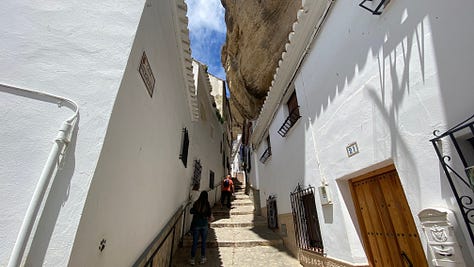
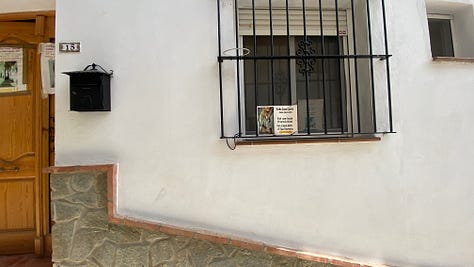
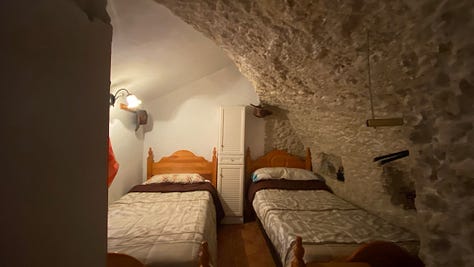
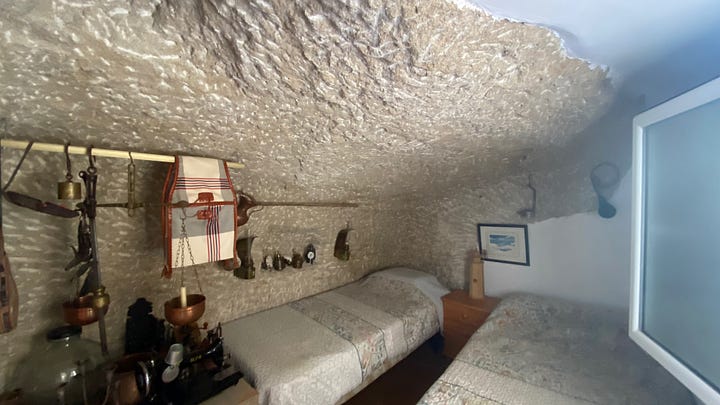

The homes are often more like overhangs with added walls than full caves, but the natural outcrops form an integral part of much of the architecture here. Humans and nature work together to form a symbiotic relationship that embraces both the civilized and the savage. The builders have incorporated and accommodated natural forms in a way you will rarely see in modern urban design.
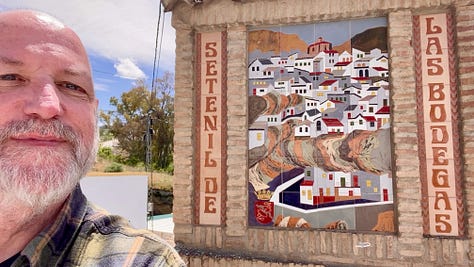
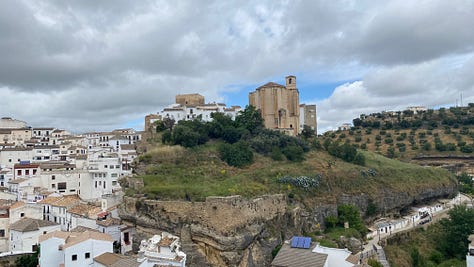
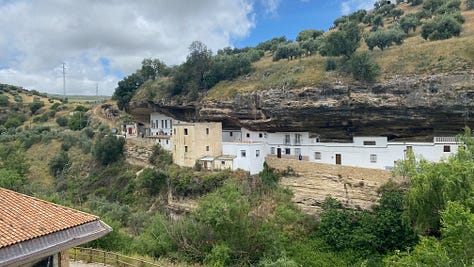
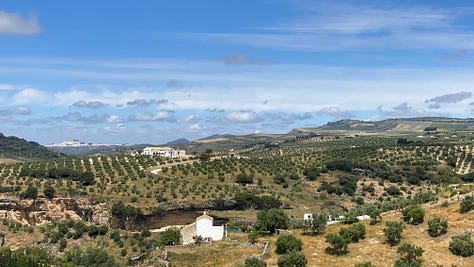
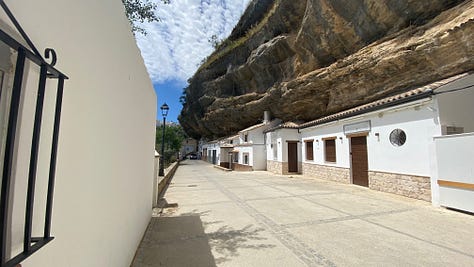
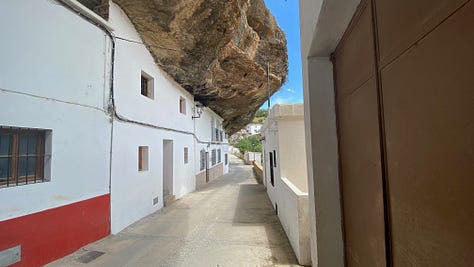
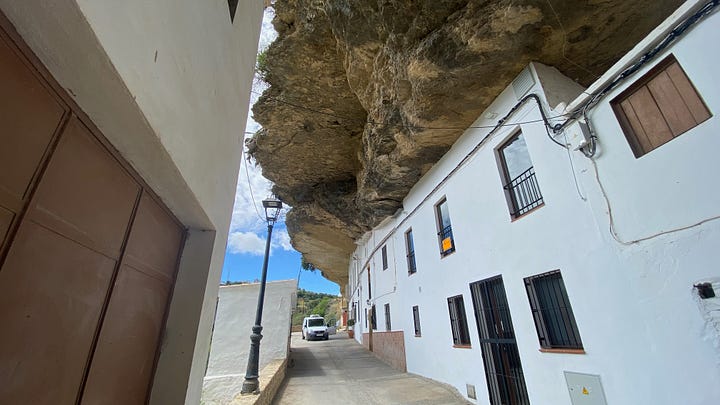
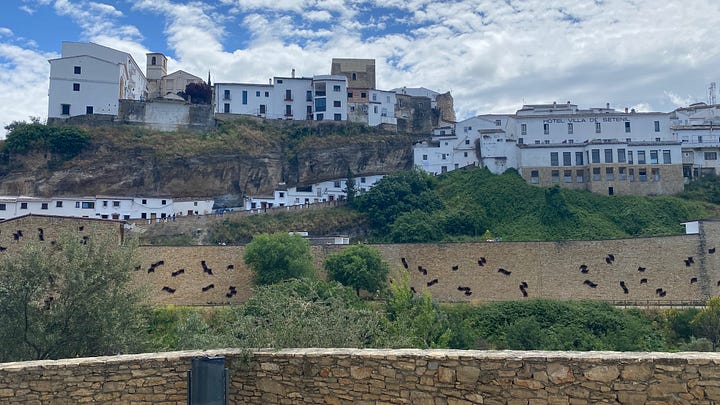
I would have liked to spend more time exploring the winding streets of Setenil, but at that point I was still hoping to spend a few hours in Ronda, where some spectacular scenery was awaiting, before finishing the day in Màlaga. As I mentioned above, however, it was impossible to find parking in the packed streets of Ronda and I ended up back on the highway, having seen nothing but hordes of tourists who’d planned much better than I had.
So that’s it for today. In real time, I am now settled into a small French town called Saintes (pop. 25,000), where I’ll be cat-sitting for the next three weeks. I’m hoping to use the time to catch up on my blogging and to enjoy a little quiet time in truly rural France.
I’ll interrupt the timeline a little this week with a special blog to commemorate the 80th anniversary of the June 6 D-Day landings in Normandie, which is where I was for much of the past week. But don’t worry, we’ll be back on the road in sunny Spain soon enough.
Thanks for taking this long and winding road with me. À bientôt.






